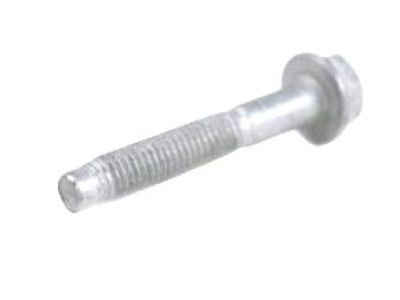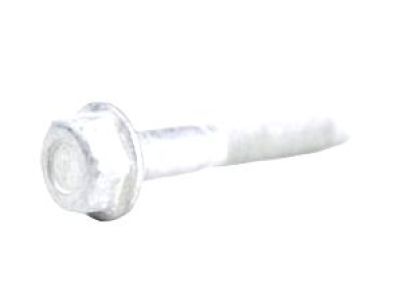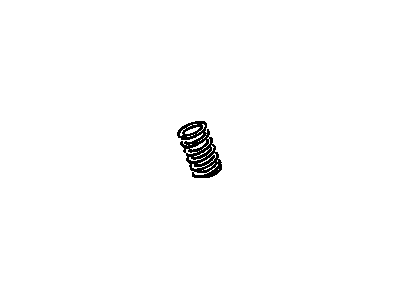
My Garage
My Account
Cart
Genuine Chevrolet Camaro Rocker Shaft Spring Kit
Rocker Shaft Spring Set- Select Vehicle by Model
- Select Vehicle by VIN
Select Vehicle by Model
orMake
Model
Year
Select Vehicle by VIN
For the most accurate results, select vehicle by your VIN (Vehicle Identification Number).
11 Rocker Shaft Spring Kits found
Chevrolet Camaro Bolt, Heavy Hx Acorn Flange Head
Part Number: 11588728$0.46 MSRP: $0.72You Save: $0.26 (37%)Ships in 1-3 Business DaysChevrolet Camaro Spring, Valve
Part Number: 12621428$29.07 MSRP: $46.35You Save: $17.28 (38%)Ships in 1-3 Business DaysChevrolet Camaro Spring, Valve (W/ Dampener)
Part Number: 3911068$8.89 MSRP: $14.18You Save: $5.29 (38%)Ships in 1-3 Business DaysChevrolet Camaro Spring, Valve
Part Number: 12647873$11.41 MSRP: $17.97You Save: $6.56 (37%)Ships in 1-3 Business DaysChevrolet Camaro Spring Kit,Valve (W/Cap)
Part Number: 19257200$9.30 MSRP: $14.82You Save: $5.52 (38%)Ships in 1-3 Business DaysChevrolet Camaro Spring Assembly, Vlv
Part Number: 94666580$8.89 MSRP: $14.18You Save: $5.29 (38%)Ships in 1-3 Business DaysChevrolet Camaro Spring Assembly, Valve
Part Number: 3735381$17.08 MSRP: $26.88You Save: $9.80 (37%)
Chevrolet Camaro Rocker Shaft Spring Kit
Each OEM Chevrolet Camaro Rocker Shaft Spring Kit we offer is competitively priced and comes with the assurance of the manufacturer's warranty for the part. Furthermore, we guarantee the speedy delivery of your orders right to your doorstep. Our hassle-free return policy is also in place for your peace of mind.
Chevrolet Camaro Rocker Shaft Spring Kit Parts Questions & Experts Answers
- Q: How can broken Rocker Shaft Spring Kit and Valve Stem Oil Seal be replaced without removing the cylinder head in V8 engine on Chevrolet Camaro?A:Valve springs break and valve stem seals can be changed without removing a cylinder head, generally, two special tools and compressed air. First, the spark plugs and valve covers shall be unplugged and by turning the crankshaft of the vehicle, the piston number one should be on the compression stroke TDC. Take out the Rocker Arms for the number one cylinder, insert an adapter into the spark plug hole and attach an air line from compressed air. Using compressed air jam the valves on the cylinder and for the cylinder head hole stuff the shop rags so as to avoid oil and other parts or tools to fall on the engine. Lightly hammer on the heads of the valve springs with a soft-faced hammer to free the valve keeper from its seat on the spring retainer with a magnet or with small needle-nose pliers using a valve-spring compressor. Lift off the valve spring and the retainer and if air pressure cannot keep the valve closed the valve face or seat may be bent and will require the cylinder head to be pulled for repairs. Take out the previous valve stem seals with the typical variation between the intake and the exhaust seals and circle the head of the valve stem with a rubber band or some piece of thin tape so as the top of the valve stem won't fall off into the combustion chamber before one can release the air pressure. Check the valve stem for signs of wear particularly the smooth running of the stem in the guide; if this fails the head will have to be unbolted for further repair. Pump in a little air pressure to lock the valve in its closed position; then, place the new valve stem seals over the ends of the intake and exhaust valve guides. Place the keepers alongside the retainer and over the valve, compress the valve spring assembly enough through to seat the keepers and use a drop of grease just to ensure that they are well in place. Retract the keepers and take off the pressure from the spring tool, thereafter, take off the air hose and remove the adapter from the spark plug hole. Perform the same on the other cylinders, with each piston at TDC on the compression stroke when air pressure is applied and the rocker arm assemblies and valve covers fitted back.
Related Chevrolet Camaro Parts
Browse by Year
2024 Rocker Shaft Spring Kit 2023 Rocker Shaft Spring Kit 2022 Rocker Shaft Spring Kit 2021 Rocker Shaft Spring Kit 2020 Rocker Shaft Spring Kit 2019 Rocker Shaft Spring Kit 2018 Rocker Shaft Spring Kit 2017 Rocker Shaft Spring Kit 2016 Rocker Shaft Spring Kit 2015 Rocker Shaft Spring Kit 2014 Rocker Shaft Spring Kit 2013 Rocker Shaft Spring Kit 2012 Rocker Shaft Spring Kit 2011 Rocker Shaft Spring Kit 2010 Rocker Shaft Spring Kit 2002 Rocker Shaft Spring Kit 2001 Rocker Shaft Spring Kit 2000 Rocker Shaft Spring Kit 1999 Rocker Shaft Spring Kit 1998 Rocker Shaft Spring Kit 1997 Rocker Shaft Spring Kit 1996 Rocker Shaft Spring Kit 1995 Rocker Shaft Spring Kit 1994 Rocker Shaft Spring Kit 1993 Rocker Shaft Spring Kit 1992 Rocker Shaft Spring Kit 1991 Rocker Shaft Spring Kit 1990 Rocker Shaft Spring Kit 1989 Rocker Shaft Spring Kit 1988 Rocker Shaft Spring Kit 1987 Rocker Shaft Spring Kit 1986 Rocker Shaft Spring Kit 1985 Rocker Shaft Spring Kit 1984 Rocker Shaft Spring Kit 1983 Rocker Shaft Spring Kit 1982 Rocker Shaft Spring Kit




















